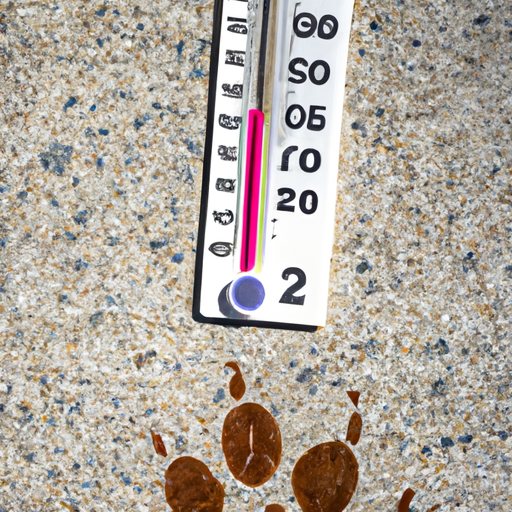As a dedicated caregiver for your furry friend, it’s crucial to be aware of the many potential hazards that might affect their well-being. One often overlooked danger is the heat of the pavement under their paws. In this guide, you’ll learn everything you need to know about this issue, from identifying when the pavement is too hot, to preventing and treating paw burns.
How to Determine If the Pavement Is Too Hot for Your Dog
Before taking your pet for a walk on a hot day, it’s essential to test the pavement. Here are three methods you can employ:
- The Bare Hand or Foot Test: Simply place the back of your hand or your bare foot on the pavement. If you can’t hold it there for at least 5 seconds, it’s too hot for your dog to walk on.
- The Infrared Thermometer Test: This device provides a more accurate temperature reading. Pavement that’s over 125°F (51.7°C) is potentially harmful, and anything above 140°F (60°C) can cause burns quickly.
- The Egg Frying Test: This is more of a fun experiment than a practical test, but if an egg starts to fry on the pavement, it’s definitely too hot for your dog.
The Dangers of Hot Pavement to Dogs
Dogs’ paw pads may seem tough, but they’re sensitive to heat. Exposure to hot pavement can cause:
- Burns: These can range from first-degree burns (surface burns) to third-degree burns (affecting deeper tissues).
- Blisters and ulcers: These painful sores can make it difficult for your dog to walk.
- Permanent damage: In severe cases, extended exposure to hot pavement can lead to chronic problems like lameness, deformities, and scar tissue formation.
Preventing Paw Burns
Prevention is always better than cure. Here are some ways you can protect your dog from hot pavement:
- Walk your dog early in the morning or late in the evening: These are the coolest parts of the day, when the pavement is less likely to be scorching.
- Use dog boots or paw wax: These provide a protective barrier between the hot pavement and your dog’s sensitive paws.
- Opt for grass or shaded areas: These surfaces are cooler than asphalt or concrete.
- Hydrate your dog: Just like humans, dogs can get dehydrated in hot weather. Make sure your dog has access to fresh water before, during, and after walks.
Treating Paw Burns
Despite your best efforts, your dog might still end up with a paw burn. Here’s what you should do:
- Cool the burn: Rinse your dog’s paw with cool (not cold) water or apply a cold compress.
- Clean the wound: Use a mild soap and rinse thoroughly.
- Seek veterinary care: It’s important to have a professional assess the burn and provide appropriate treatment.
| Steps | Do’s | Don’ts |
|---|---|---|
| 1 | Use cool water | Don’t use ice or very cold water |
| 2 | Use mild soap | Don’t use strong disinfectants |
| 3 | Consult a vet | Don’t try to treat severe burns yourself |
Frequently Asked Questions
Q: How quickly can hot pavement burn a dog’s paws?
A: A dog’s paws can be burned by hot pavement in as little as one minute. The severity of the burn, however, will depend on the temperature of the pavement and the length of exposure.
Q: What should I do if my dog refuses to wear boots?
A: Gradually introduce the boots using positive reinforcement, such as treats. If your dog still refuses, try using paw wax or avoid hot pavement altogether.
Q: Can I use human burn cream on my dog?
A: Not without consulting a vet. Some human medications can be harmful to dogs. Always seek professional advice before applying any treatment.
Armed with this knowledge, you’re now better equipped to protect your furry friend from the dangers of hot pavement. Remember, as a caregiver, your dog’s safety and comfort should always be your top priority. Happy walking!



